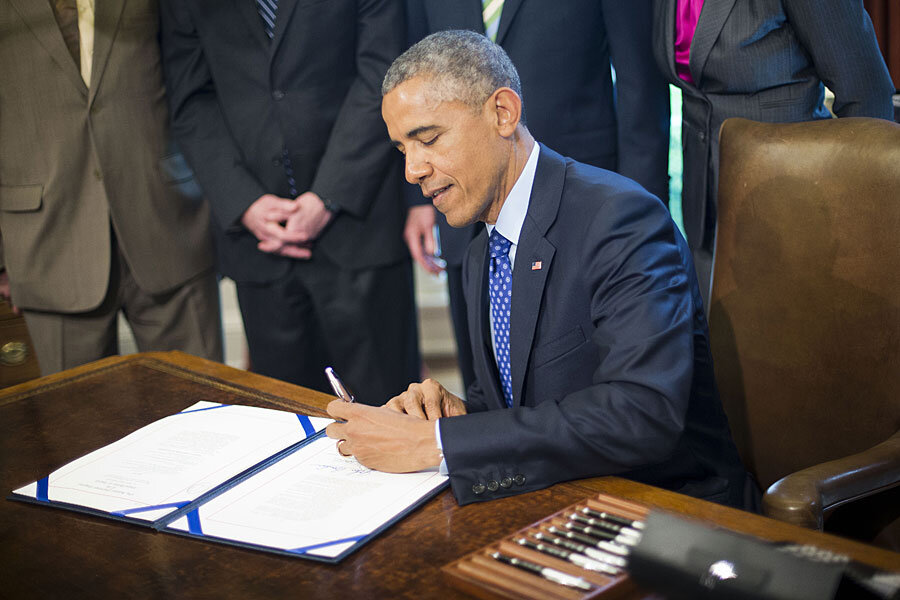Barack Obama's climate change initiative: $4 billion for clean energy
Loading...
A series of initiatives and recent investment successes in the field of renewable energy were announced at the White House Clean Energy Investment Summit on Tuesday morning.
“Unbelievably exciting advances" are "happening in real time” in the field of clean energy, senior advisor to the president Brian Deese, told summit attendees. Mr. Deese spoke of progress made in meeting the “global challenge” in the field of renewable energy, and characterized the advances his team and the Obama administration have made as “improbably American success[es].” Chief among these gains, Deese noted, are a 50 percent decrease in the cost of solar energy and a three-fold increase in the amount of energy produced by wind since 2009.
The summit comes just two days before Pope Francis is scheduled to release an encyclical on climate change, calling for changes in lifestyle and energy consumption to avert the “unprecedented destruction of the ecosystem” before the end of this century, according to a leaked draft, The Guardian reported. “Humanity is called to take note of the need for changes in lifestyle and changes in methods of production and consumption to combat this warming, or at least the human causes that produce and accentuate it,” said the draft.
The creation of the Clean Energy Impact Investment Center – which will be a single-access point for entrepreneurs and the public to learn about the available resources for clean energy investment – was also announced at the summit by Dr. Elizabeth Sherwood Randall, deputy secretary at the Department of Energy.
But even before the summit, news broke that the White House was able to nearly double their monetary goal, amassing $4 billion in private investment commitments to climate change solutions from entities such as the University of California, Goldman Sachs, the Alaska Permanent Fund, and Teachers Insurance and Annuity Association, each pledging upwards of $100 million towards investing in clean energy.
This commitment of private funding to renewable energy can be seen as a “huge down payment” on the goal of clean energy, said John Holdren, senior advisor to President Obama on science and technology.
The University of California was one of the largest private investors, pledging $500 million in clean energy investment commitments. Jagdeep Singh Bachher, chief investment officer and vice president of investments at the University of California, spoke at the summit. He characterized the university’s contribution as a small part of the much larger puzzle of clean energy, encouraging the audience to “come together and work together.” As an investor, he spoke to the need for patience, citing the university’s commitment as “investing for the long term," noting that "in that context, you have you look at climate change.”
A 2013 study published by the Climate Policy Initiative titled “The Challenge of Institutional Investment in Renewable Energy” listed investment options including investing in renewable energy corporations, direct investments, and pooled investment funds. One of the chief issues they highlighted was the willingness of private investors to take on investing in what has been perceived as an uncertain market.
But the tide may now be turning in terms of investor interest in the field. “All stages of investment in clean energy from research and development to full scale deployment are being seen in the private sector as increasingly attractive areas of investment," noted Dan Reicher, the executive director of the Steyer-Taylor Center for Energy Policy and Finance at Stanford University and acting CEO of the American Council on Renewable Energy, who also attended the summit.
Mr. Reicher, who is also the former US assistant Secretary of Energy for Energy Efficiency and Renewable Energy under President Bill Clinton, was optimistic about the future of private investment in renewable energy.
“I think that there is an increasing public perception that clean energy technologies have become mainstream and they offer a chance to both do well and do good,” he says.








